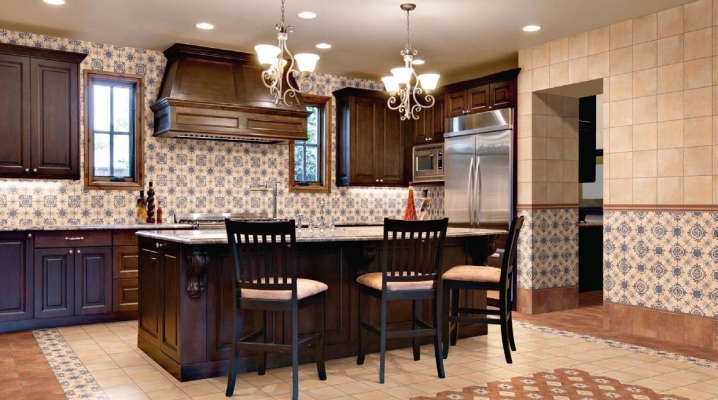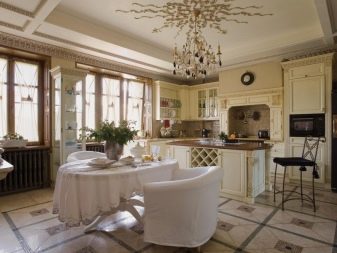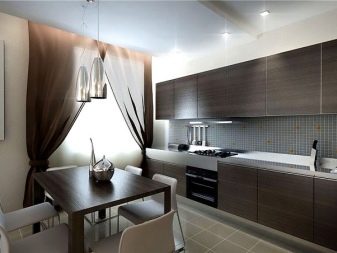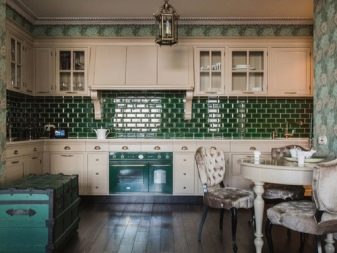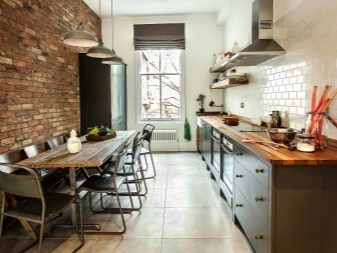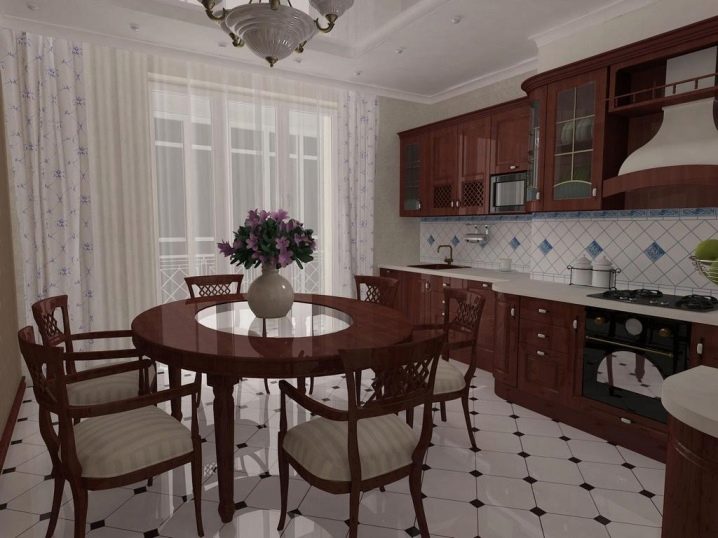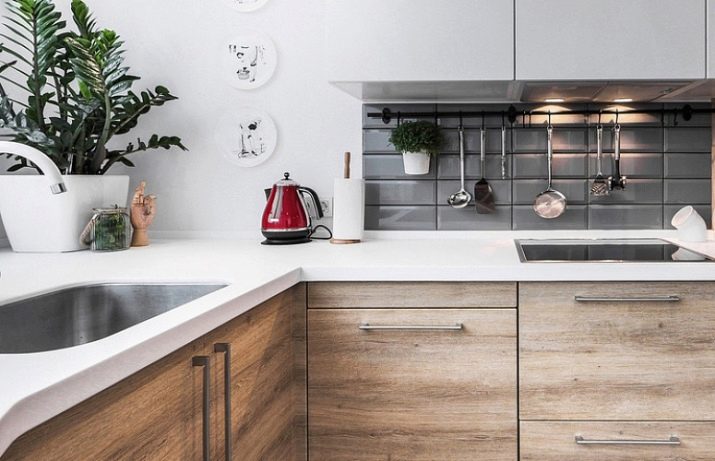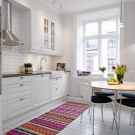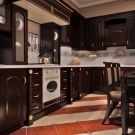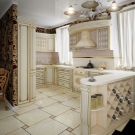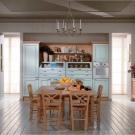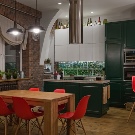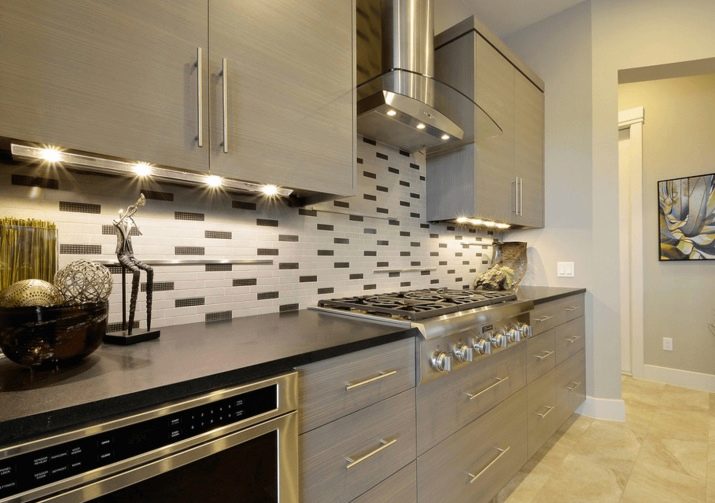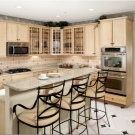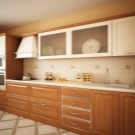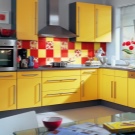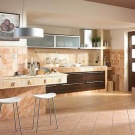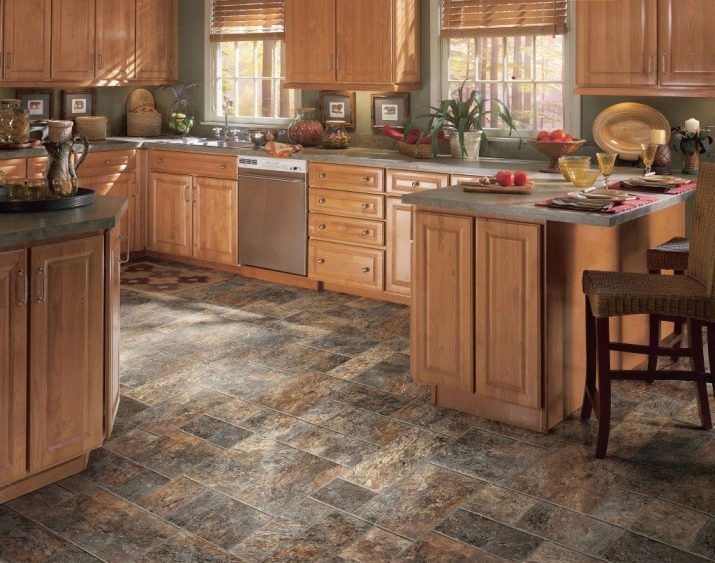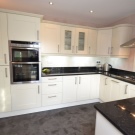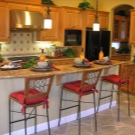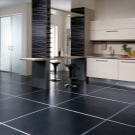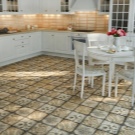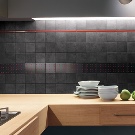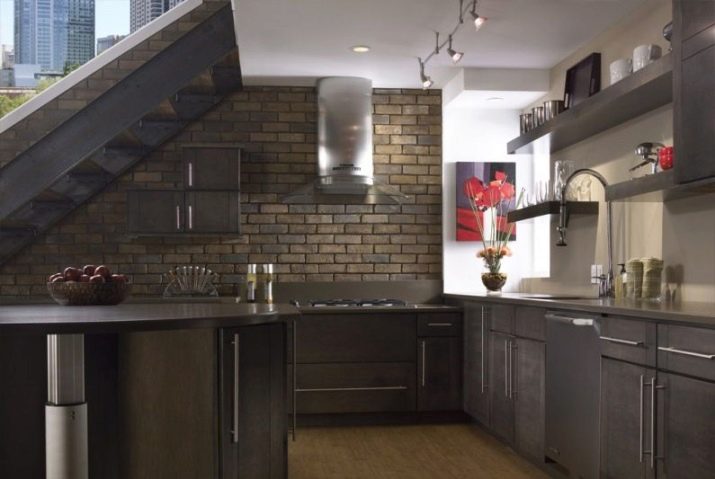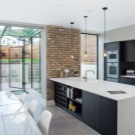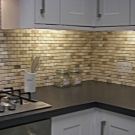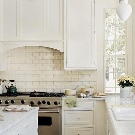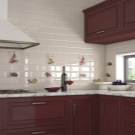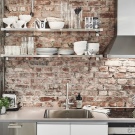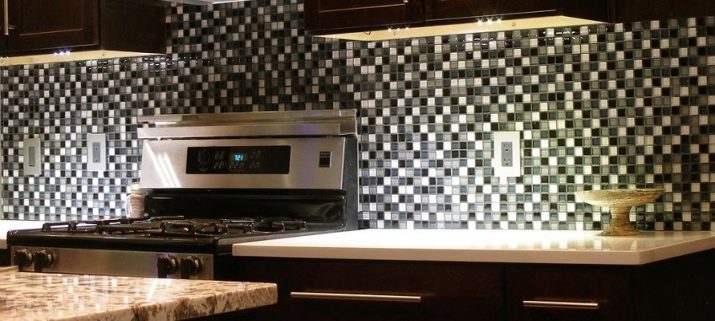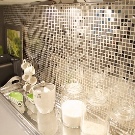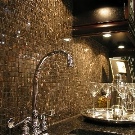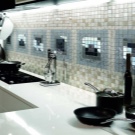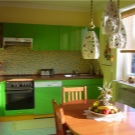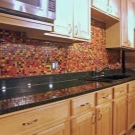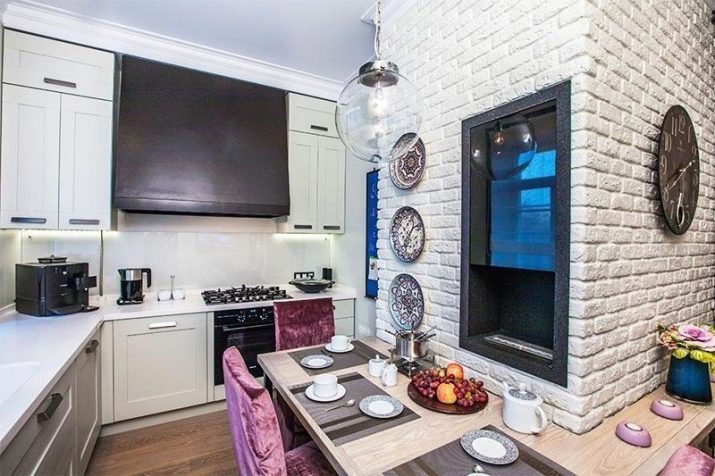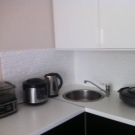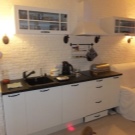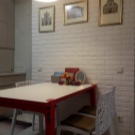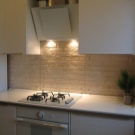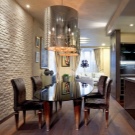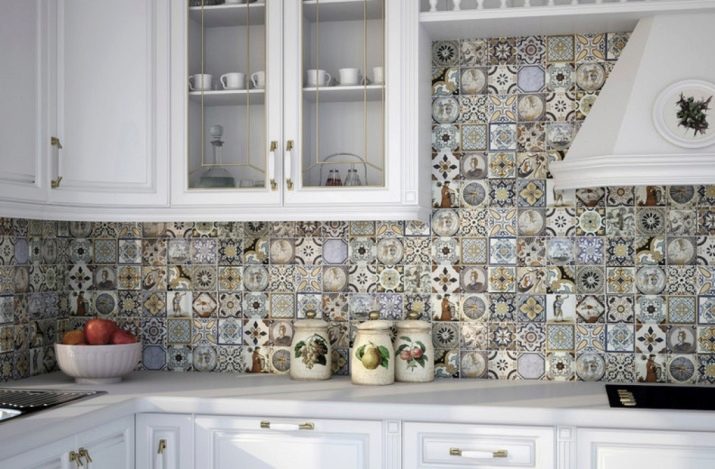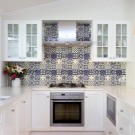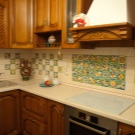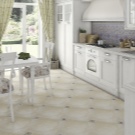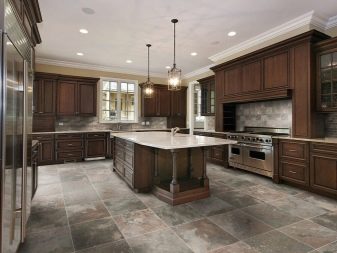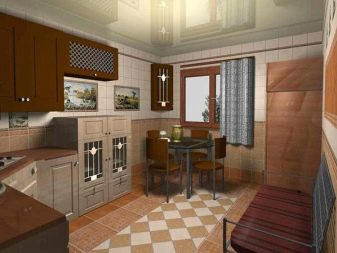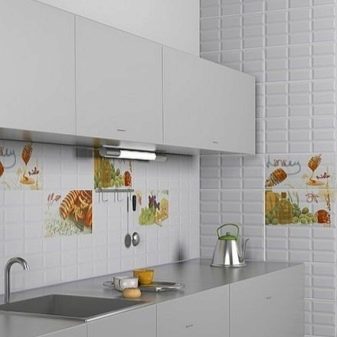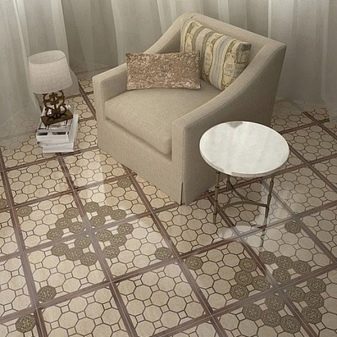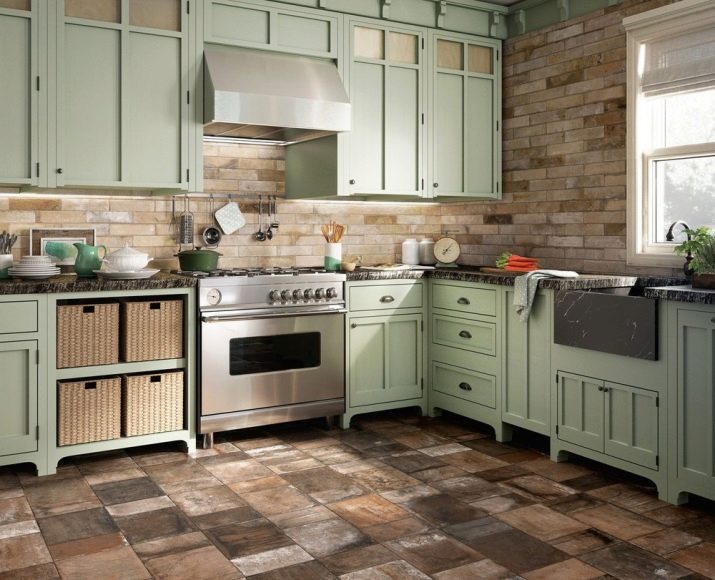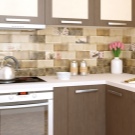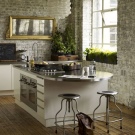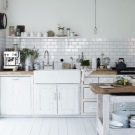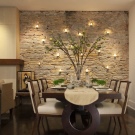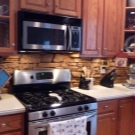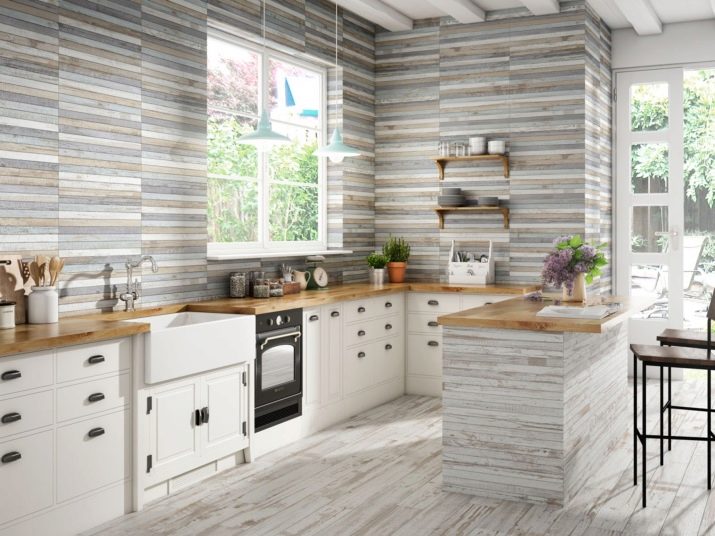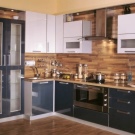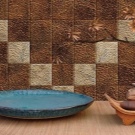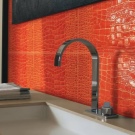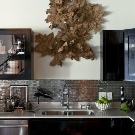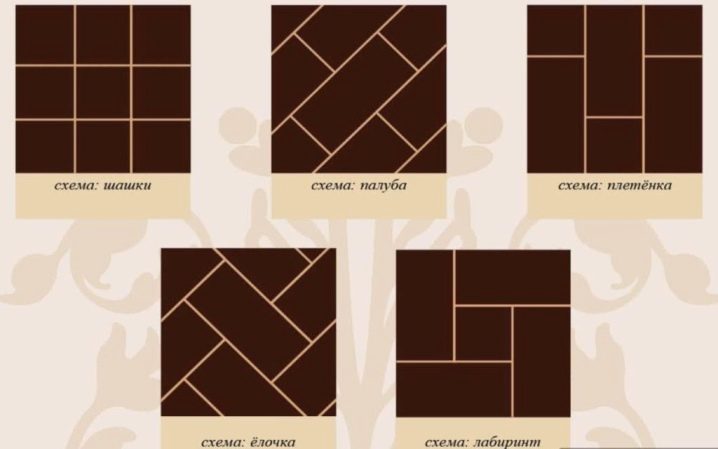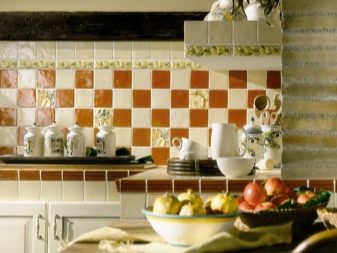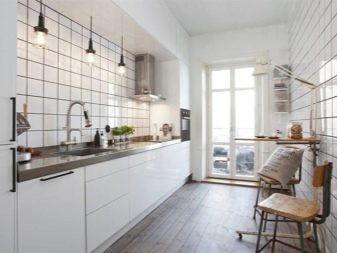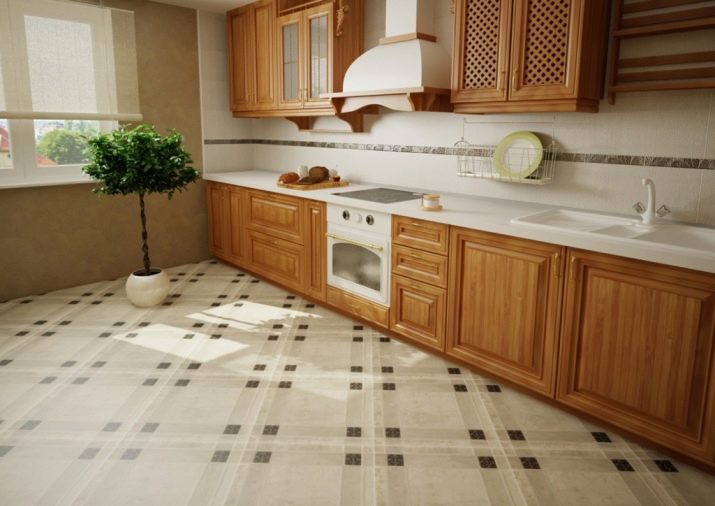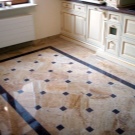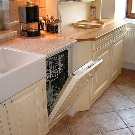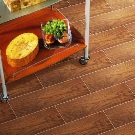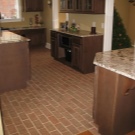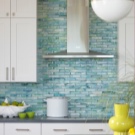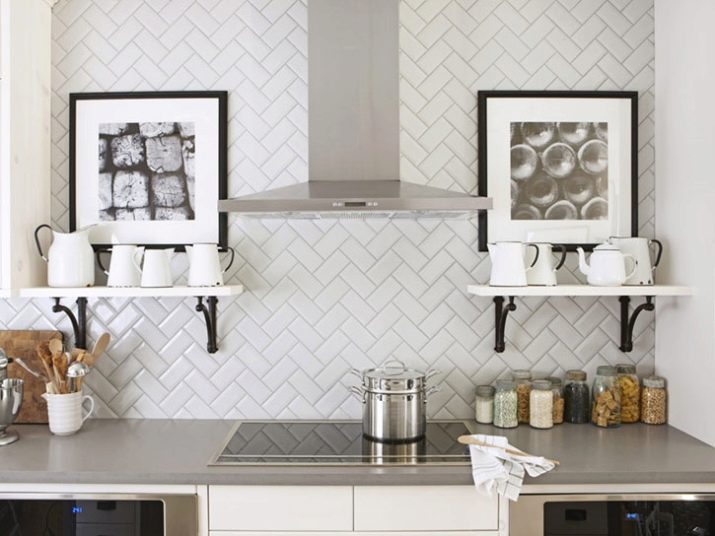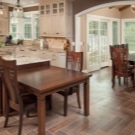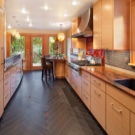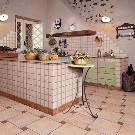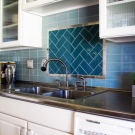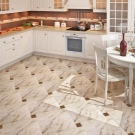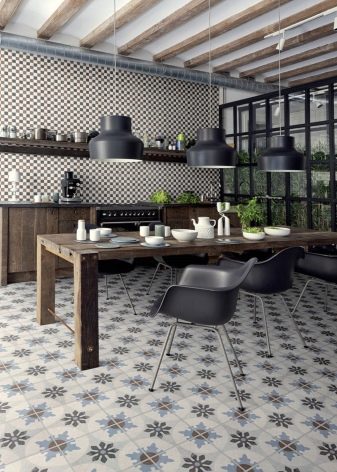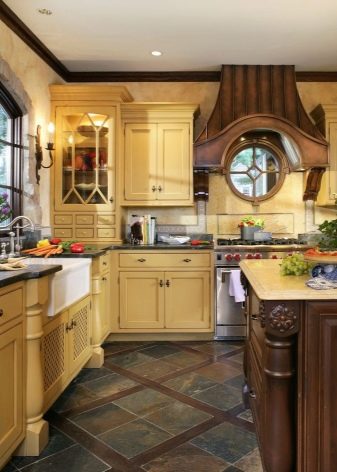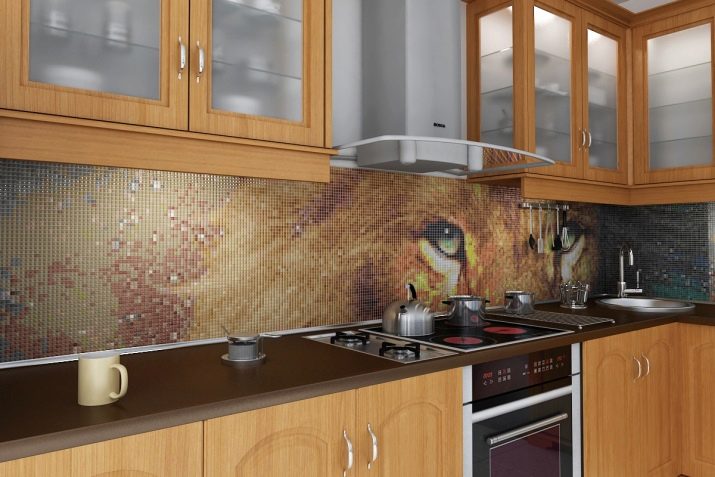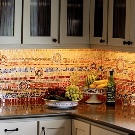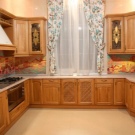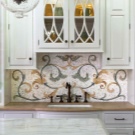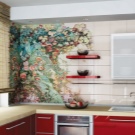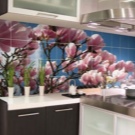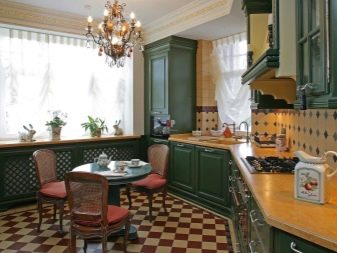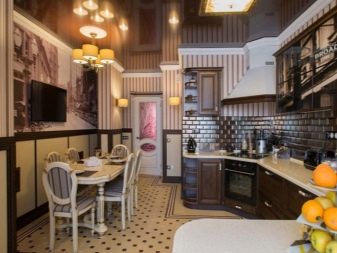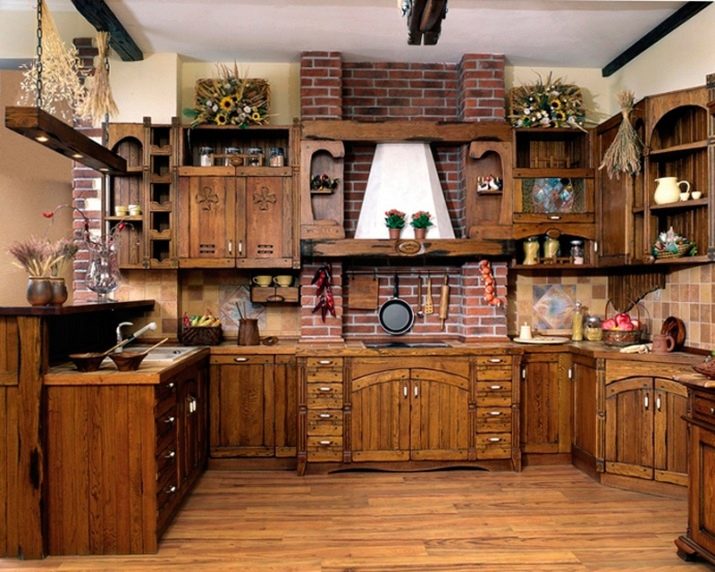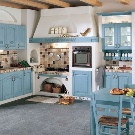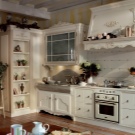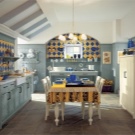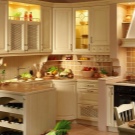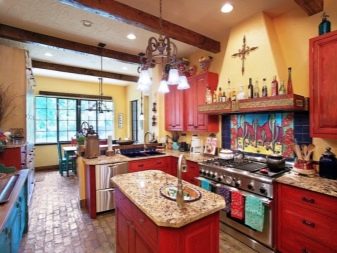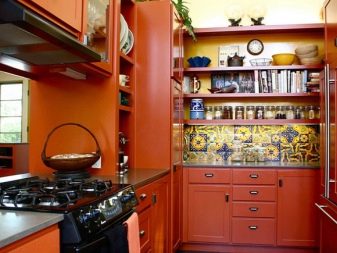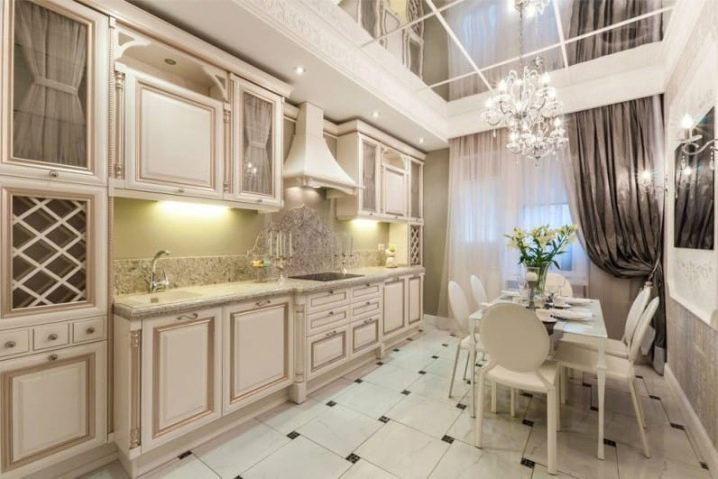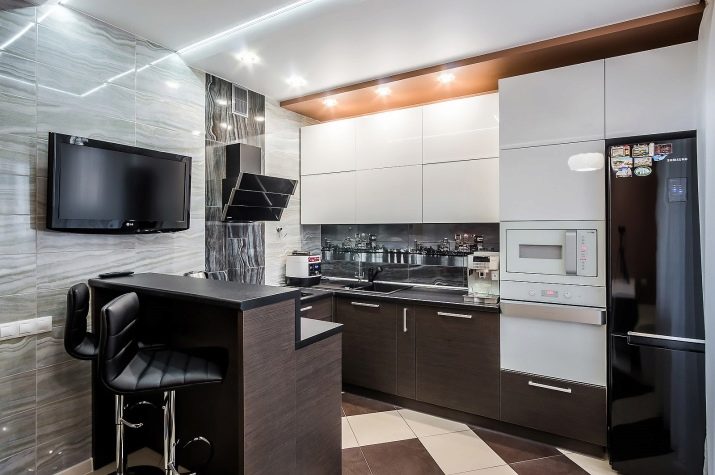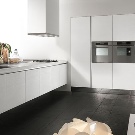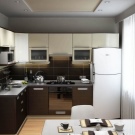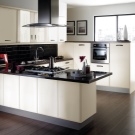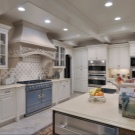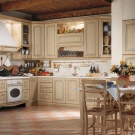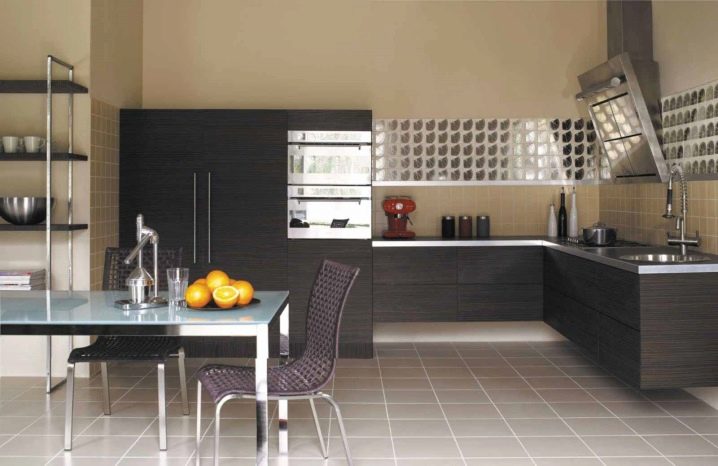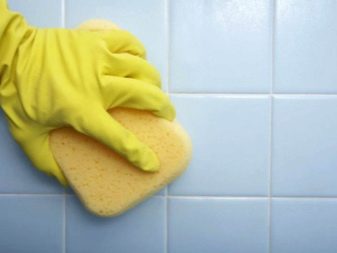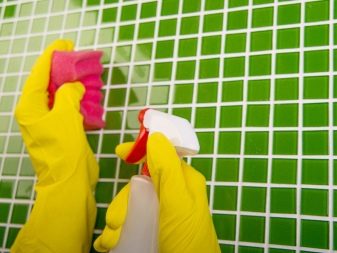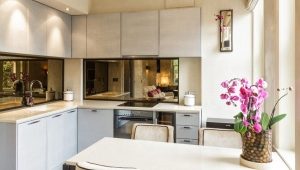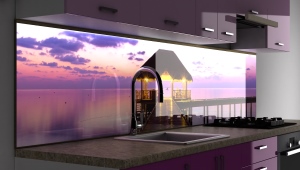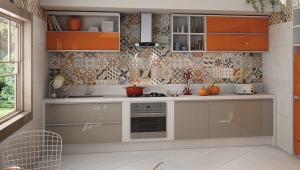Tile for the kitchen
Tile - the best material for finishing the kitchen. They traditionally cover the floor, as well as make out the apron and the walls of the room. Such demand is caused by the fact that this finishing material, provided it is properly selected, is durable and meets the specific features of the kitchen. In addition, the tile is good from an aesthetic point of view: due to the variety of sizes and design, this material can give an individual and unique style to any interior.
ADVANTAGES
The surface covered with a tile is very durable. This is due to the fact that this material is resistant to moisture, temperature changes, as well as the influence of chemical cleaning agents. The tile does not support the combustion process, with a high degree of refractoriness. Also, the tile has a low level of electrical conductivity, ensuring the electrical safety of all households. The durability of this material is due to its cruelty, which allows it to withstand the most serious loads.
In addition, tile is a very hygienic material.It is easy to clean, and its surface is an unfortunate medium for the reproduction of microorganisms.
Plus, this material is environmentally friendly. This property is associated with the firing temperature at which tiles are made.
And, perhaps, the only drawback of tile is that this material is cold. However, this problem is solved by creating a heated floor.
Thus, it is difficult to find a similar finishing material, which in its performance characteristics could be compared to tile.
HOW TO CHOOSE
Tile - The collective name of the group of finishing materials, which differ in manufacturing technology and, accordingly, have different characteristics.
- Ceramic tile - the most common type of tile. This finishing material has different colors, texture and texture. Its advantages in contrast to the same laminate - strength, durability, hygiene, moisture resistance, fire resistance, wide range, affordable price. The disadvantage of this finishing material is one - with time it burns out, and the ornament can partially or completely fade.Glossy tile options are suitable for wall decoration and an apron, and matte are good as flooring.
- Porcelain stoneware - the most durable and durable type of tile. This material, unlike ceramic tiles, does not fade with time, is less susceptible to the detrimental effect of moisture and is resistant to mechanical damage. But this material is quite difficult to handle and cut, and sometimes lay, because it is quite heavy. Porcelain tiles are well suited for both the apron and countertop, and for the floor. The main disadvantages of porcelain tiles - fragility during transportation, high price, small range.
- Clinker - the tile for which the difficult geometry is characteristic. Clinker has excellent performance: resistant to moisture, resistant to temperature changes, does not deteriorate from the effects of various chemical agents, and it is easy to take care of him. In terms of strength, this type of tile is similar to porcelain stoneware.
- Tile mosaic It consists of a large number of components that are no more than 5 centimeters in size. The main advantage of this material is that with its help you can create the most unexpected drawings and compositions that will look very lively and impressive.The choice of color mosaic is almost limitless. This type of coating is resistant to external influences: and does not deteriorate under the influence of chemical cleaning agents and moisture. Mosaic, as a rule, is used as a wall decor.
- Gypsum tile - effective, but not practical. In the relief surface and the seams dirt accumulates, which is very hard to wash out. Tile of plaster is suitable for finishing the dining area. You can also arrange an apron with this material, but at the same time it is necessary to cover the tiles with decorative varnish.
- Majolica - a tile of small size, made of baked clay, decorated with painting. It does not spoil from the negative temperature effects and humidity. However, this material is suitable only for the decoration of walls and apron.
In addition, the tile is classified into glazed and unglazed. Glazed tile is covered with glass. Unglazed does not cover. The first one is good for wall cladding, as it is smooth in texture and much easier to wash. Unglazed tile is better to use as a flooring, as its rough texture will prevent slipping.
The most reputable tile manufacturers are Italy and Spain. However, it is difficult to say which tile is better. Italians pay great attention to product design, focusing on elegance and restraint. For the Spanish tiles are characterized by bright colors. If we talk about domestic brands, then perhaps the best have proven themselves in the market, the Azori collection.
MODERN OPTIONS
There are particularly relevant options for tiles that designers often use to create modern kitchen interiors.
- Brick Tile - very fashionable material recommended by designers for the design of any premises. Especially effectively this tile looks in the interiors executed in the Italian and Provencal styles.
- Natural stone tile good at making kitchens in classic style and country. Imitation of artificial stone should be almost indistinguishable from natural breeds.
- Extremely fashionable tile wood. It looks expensive and presentable. The advantage of this option is that it fits almost all finishes.
- Exotic lovers will be interested in tiles made under the skin of exotic animals: zebras, reptiles, elephants, etc. This finish will look very unusual.It fits well with hi-tech style and minimalism.
- Tile under the metal is also very popular. Suitable for the kitchen, made in accordance with the trends of modernity.
STORAGE OPTIONS
Laying - a very important nuance that will allow even the simplest finishing material to look interesting and original.
- Checkers - This is a fairly simple, but effective type of installation. It is suitable for square-shaped tiles. As a rule, a stone of contrasting colors is chosen to reproduce the “chess” pattern. If you lay the tile at an angle of 45 degrees, you get an effective diagonal pattern.
- Deck - the way imitating brickwork. In accordance with it, the plates should be laid in diagonal rows, but with a slight offset. In this case, the offset should be the same over the entire surface of the floor. For this method of laying tile suitable for narrow and long, as well as "hog."
- Network - This is a kind of laying, very reminiscent of the deck. The only difference is that when laying braided, plates will be laid out vertically. This method is often used for lining a kitchen apron. This pattern looks good on a small glossy tile.
- Herringbone - is a method of mounting a rectangular tile, very reminiscent of parquet. This method is used for both working wall and kitchen apron, and when laying tiles on the floor.
- Labyrinth - effective, but extremely time-consuming variant of installation. The original drawing is obtained by mounting square-shaped slabs together with rectangular stones framing them.
DESIGN EXAMPLES FOR CREATING AN INTERIOR
Ceramic tiles for the design of the kitchen is selected based on the basic design ideas and color solutions, in accordance with which the room is made. Its color should be in harmony with the walls, ceiling, kitchen and furniture. And it is very desirable that in the kitchen there are elements of decor, echoing the color of the tile.
A panel laid out on a mosaic wall will look very original and bold. At the same time, as the designers note, the mosaic is well combined with a monochromatic tile of a consonant color that is ordinary in size. An alternative option for tiled panels can be special vinyl stickers for tiles. This accessory will look very impressive, as well as be able to mask various defects: chips or scratches on the tile surface.
In addition, to update the interior, you can paint the tile with acrylic or epoxy paint. Painting - the least expensive way to change the style of the room without global repair.
Also, when you design the kitchen should not use more than three primary colors. If there is a desire to visually expand the space, then for facing the walls it is worth using a tile of light shades. In addition to color, it is necessary to take into account the size of the coating: a large tile visually reduces the room, while a small tile expands it.
Very relevant interiors, decorated in style. country music. To create this style, as a rule, they use beige, golden, dark brown materials reproducing stones of natural origin, as well as ancient ornaments. In this case, should be laid on the floor artificially aged tile. For the design of the apron, you can choose a pattern made up of small stone with irregularities. And on the floor can be an image of a variety of natural motifs.
For the embodiment mediterranean interior suitable mosaic saturated blue or yellow-green. It will also be good painted tiles or tiles that mimic natural stones.
To create a kitchen in a classic style, you must always use the current colors: white, black, gold, silver colors - perfect. The ornament on the tile or laminate may be missing or to be calm. For the classical style, embossed decors are acceptable.
Another very fashionable style - high tech, which is characterized by minimalism in the design. Therefore, the tile is to pick up dark colors, reducing its design to a minimum. Black, gray, and a color that imitates metal will do.
For the design of the kitchen in the Provencal style fit tile pastel shades or tile panels. On the working wall will be appropriate to the drawing of unpretentious flowers, for example, tulips, and foliage.
CARE RULES
In order for the tile to keep its presentation for a long time, it must be properly maintained. For daily cleaning, a soft cloth and a gentle detergent diluted in water at room temperature will do. To bring the mirror shine to the surface, it is necessary to add several spoons of ammonia in the soap solution. If there is a need to clean the tile from greasy soles, then it is necessary to pour a little vinegar into the water.
It should be remembered that the constant use of aggressive cleaning agents may contribute to the destruction of the seams.
Particularly careful to approach the washing of glossy tiles. In no case can it be rubbed with means of hard materials and, especially, with brushes made of metal.
Thus, a properly selected tile can be an excellent means of creating a unique style. And if you follow the rules of care for this material, it is able to serve faithfully for many years.
